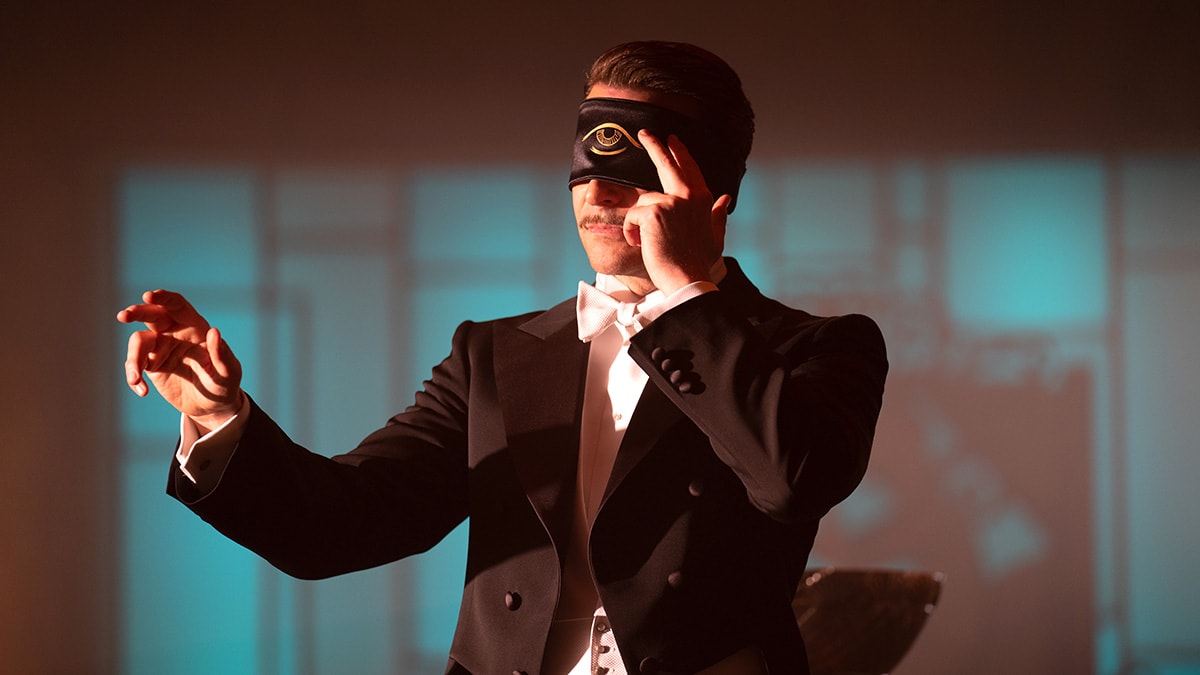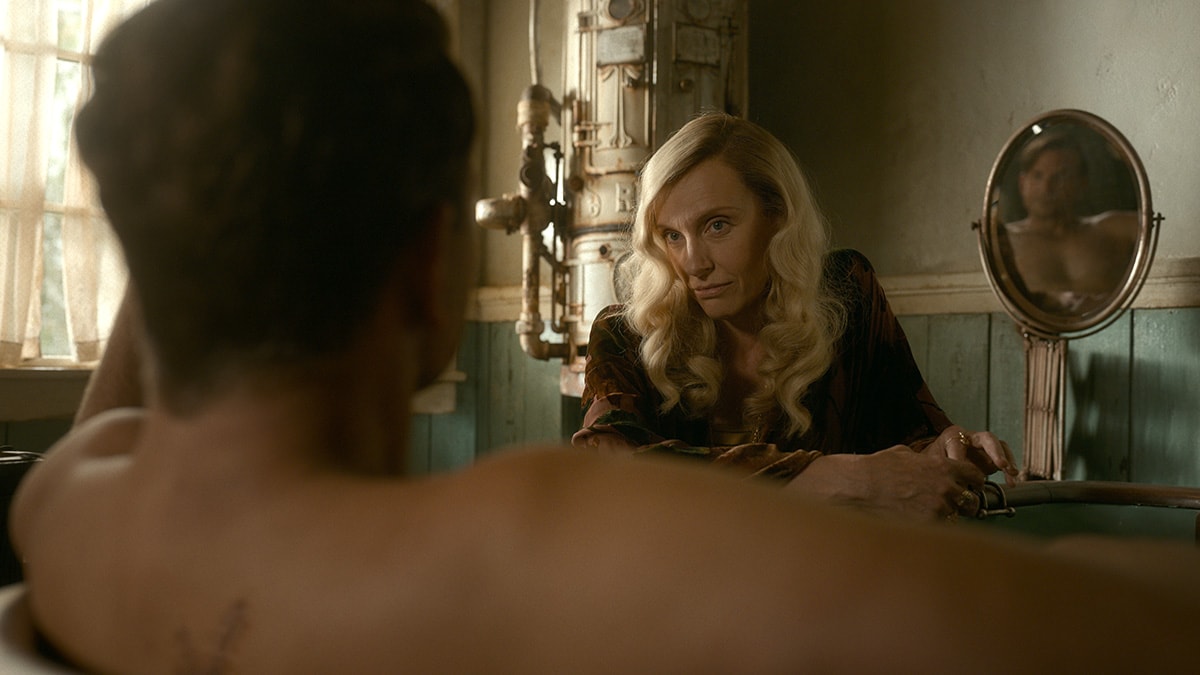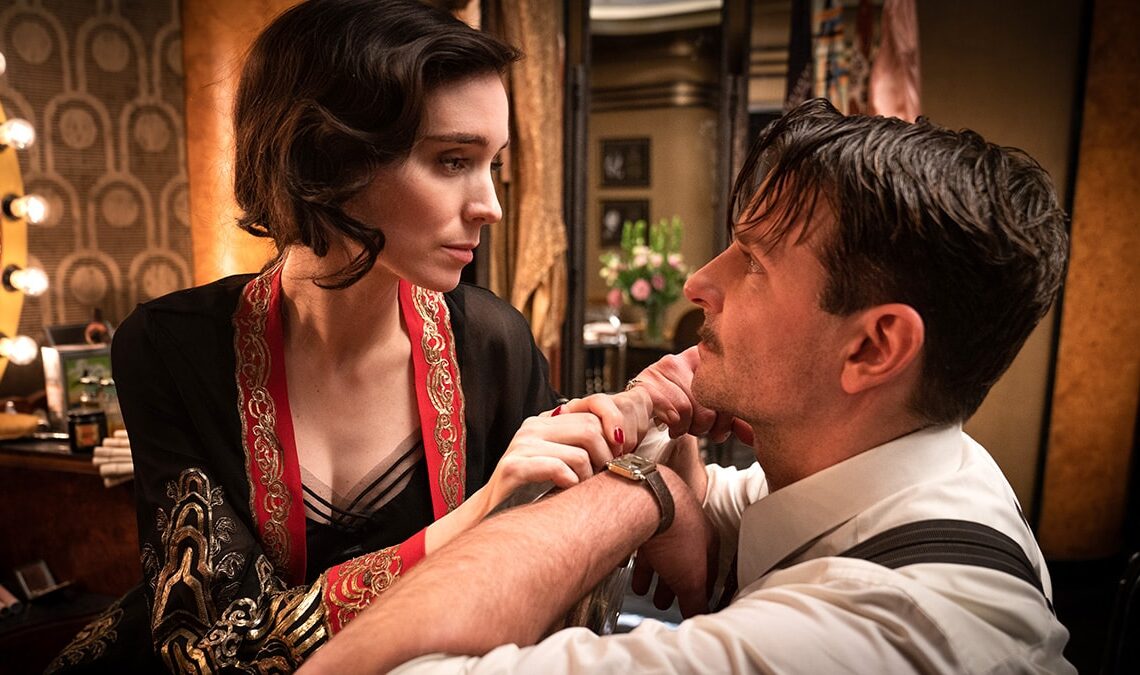Guillermo del Toro directs the latest adaptation of Nightmare Alley based on the 1946 novel by William Lindsay Gresham.
Nightmare Alley follows the same tract that most neo-noir films follow, which is to shine the spotlight on the sleazy underbelly of American institutions and to take away some of the shine of the self-made manifest destiny of the twentieth-century view of the quintessential American. And, this time, the focus is on the last gargling breath of vaudeville and the travelling carnival scene, with hustlers, scheming grifters, drug addicts turned into freaks by their addictions, fake clairvoyants, Machiavellian Femme Fatales and murderous industrialists.
The film is set in 1940s New York, where a mysterious yet charismatic down-on-his-luck Stan Carlisle (Bradley Cooper) ingratiates himself into a travelling carnival. He soon attracts the attention of clairvoyant Zeena (Toni Collette) and her has-been mentalist husband Pete (David Strathairn), where he learns the ‘mysticism’. After a mysterious death and a dangerous love affair with a virtuous Molly (Rooney Mara), Stan and Molly soon take New York society by storm. Hoping for the ultimate score (the usual ‘one last job’ that is common in these types of films), Stan hatches a scheme to con a dangerous tycoon (Richard Jenkins) with the assistance of a mysterious psychiatrist played by Cate Blanchett, who is in full 1940’s femme fatale mode.

There’s almost a poetic way del Toro leads us into the story; it takes several minutes for Stan to say anything, and by that time, we’re already quite invested in his story with so many questions hanging in the narrative. In the space of the first ten minutes of the film, we have seen Stan burn down a house, bury a body, jump on a train, and join the carnival. The first words in a film say so much about the character speaking them. Not only do they give us their accent and their style, but a lot can be defined by the musicality and the rhythm of the lines. And here, Stan gives us just enough information about himself as a man and a character as we need. The fewer words he says, the more he thinks he is in control.
Cooper is an interesting choice for the lead. His character has genuine charisma, but seems more arrogant than alluring when performing on stage, conning socialites out of their money and credibility. It is the women who lead this film. Toni Collette’s Zeena offers the audience a world-weariness, compassion and genuine affection for her husband that few other characters in the film show. Blanchett’s femme fatale oozes sexuality and malice, and Rooney Mara as Stan’s wife Molly is naive, sympathetic and holds the best connection with the audience. Mary Steenburgen’s character is out of left field, played impeccably by the veteran actress. Her narrative arc comes and goes so quickly and dramatically that it adds genuine shock and excitement to an act that drags on a little too much in parts. Ron Perlman is wasted in his role as the strongman of the carnival, as is Willem Dafoe; both parts could have been played by anyone.

Tamara Deverell’s production is heavy with green and gold, almost to the point of gaudiness. The colours of the carnival are vibrant but also faded. There’s a tackiness; the scenes in New York are full of long corridors, spacious offices and narrow foreboding streets. If this film were shot in black and white the style would be called neo-German expressionism. However, as the film is in colour, the shadows don’t have the imposing quality that old school noir films create. Shot by regular del Toro collaborator Dan Laustsen (who worked on Mimic and Crimson Peak and was Oscar-nominated for The Shape Of Water), the film is both smoky and sumptuous.
Del Toro and his co-screenwriter (and now wife) Kim Morgan add pace and momentum to the final act not seen in the original 1947 film adaptation of Nightmare Alley, making for a more exciting climax. However, the lack of real emotional depth or any real connection between Cooper and the audience leaves the inevitable fall and his poetic punishment rather hollow.
Fun Fact:
Most of the early scenes were filmed after production suspended during the Covid-19 pandemic. Bradley Cooper used the time to lose 15 pounds and appear younger at the beginning of the film.




COMMENTS